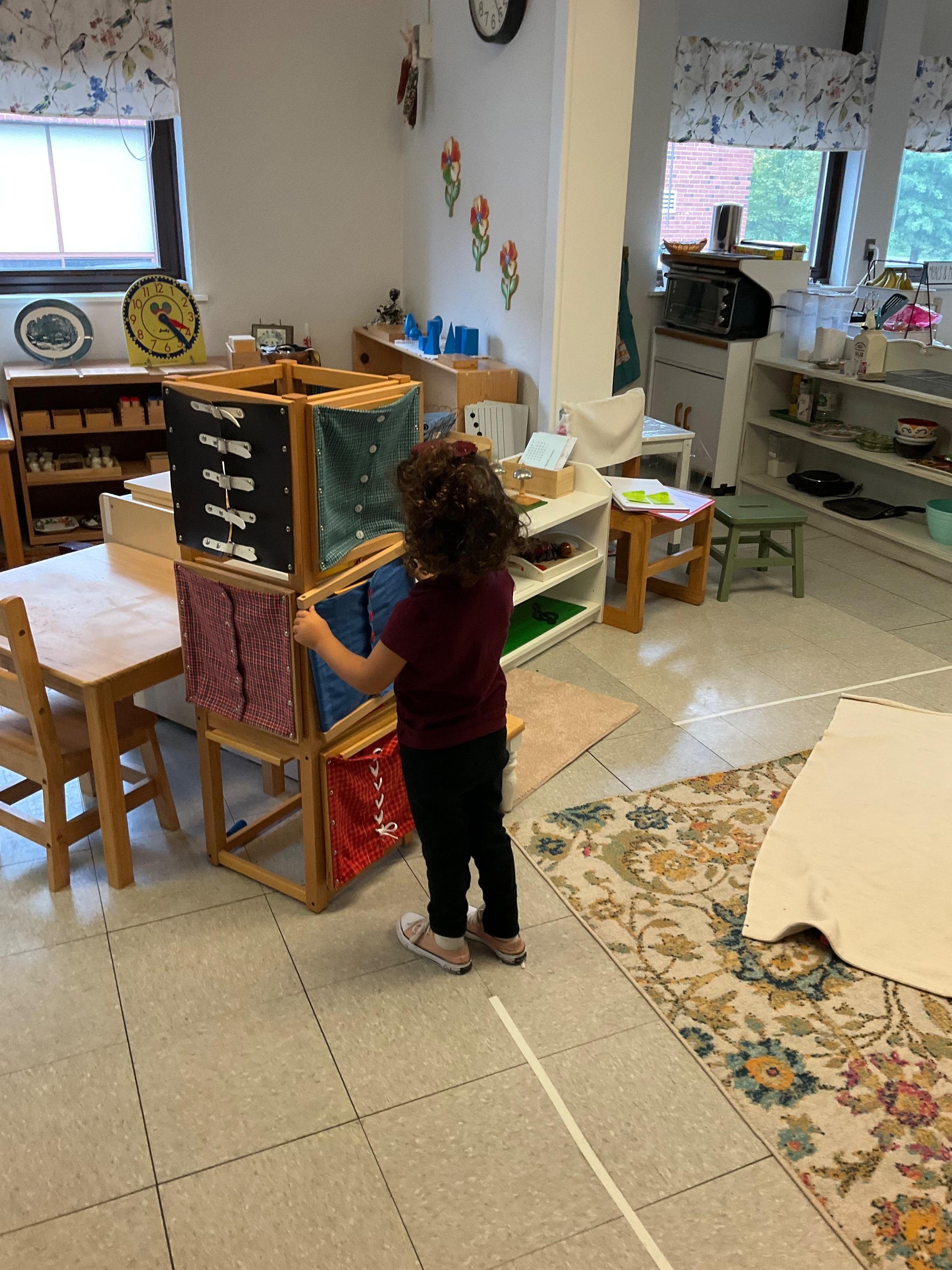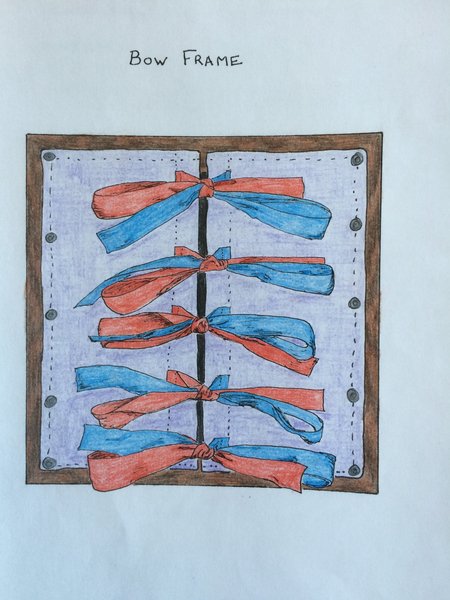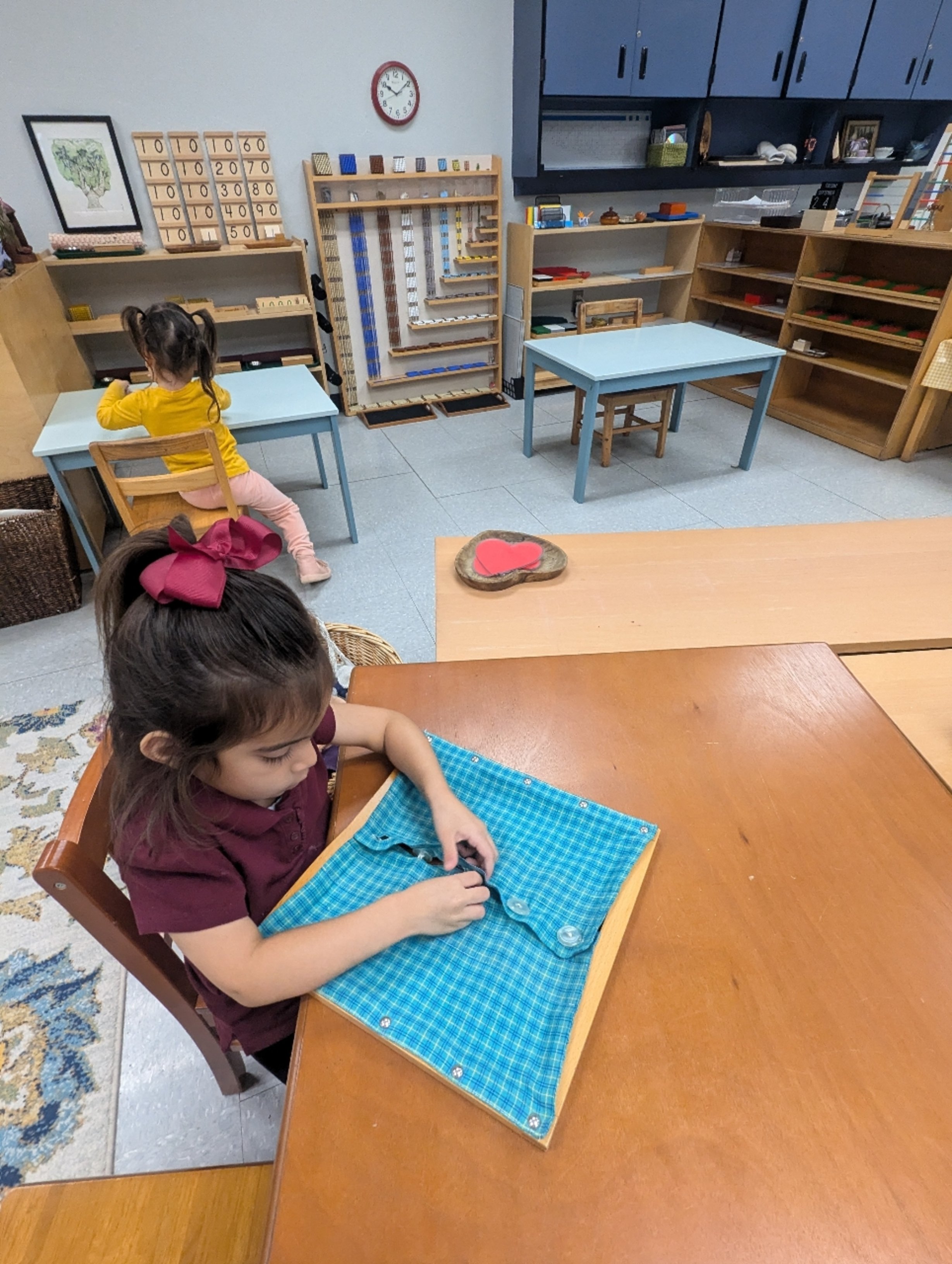This week, a parent shared with me about a super fun shoe tying activity in the Nordstrom Kids Shoe Department that she attended with her children this past summer. It made me really appreciate the lace up shoes, tie-back aprons and dressing frames that support children in our environments in the important task of tying a bow!
The bow tying frame is one of eight dressing frames in the Children's House that directly aide children in being able to take care of themselves. Other dressing frames are: The buckle frame, the button frame, the hook and eye frame, the lacing frame, the safety pin frame, the snap frame and the zipper frame. Each material is attached to a 12x12" wooden frame with flaps of fabric that meet in the center and are fastened as listed above. The bow tie frame has five red ribbons sewn on the right flap and five white ribbons sewn at the left.
As adults we take for granted our ability to tie a bow, buckle a shoe and numerous other tasks to take care of ourselves. Young children however spend a lot of time and concentration doing these things as they are developing eye/ hand coordination, refining their movement, processing sequence and order, all of these which contribute to their self-confidence by fulfilling an inner developmental need to be able to care for themselves independently.
In every presentation we give in the classroom, movement is very important. We use very precise, slow movements that follow a particular order and we use carefully chosen words, if any at all. Movements are clear and sequential and speak their own language directly to children in a way that they can understand. The Practical Life exercises of Care of the Self, isolate movements that children can absorb and refine to develop these abilities. We call them exercises, because they are movements that the children need to repeat over and over in the same way in order to acquire mastery.
First, beginning at the bottom and working to the top all the bows are untied, and the ribbons are smoothed out and laid horizontally. Crossing arms left over right, and with my pincer fingers picking up the ribbon ends and then uncrossing my arms to lay the ribbons out flat so that they are crossed... There are no fewer than 21 points in this presentation, with the last one being, to adjust the bow and make it pretty. The points of interest are what draw the children in and ignite a desire to practice this task as early as 3 1/2! I typically see mastery about 4 1/2- 5, although sometimes earlier.
It is with great care that Miss Konstanty ties shoes for children each morning until they can tie for themselves, an important task being absorbed into our little human persons! Once the older children can tie, they serve each other in the community by tying the shoes and aprons of the younger. I also often see that they want to return to the spindle rods (one of the math materials) to tie bows around all the bundles from 2 to 9!
Happy Bow Tying!




